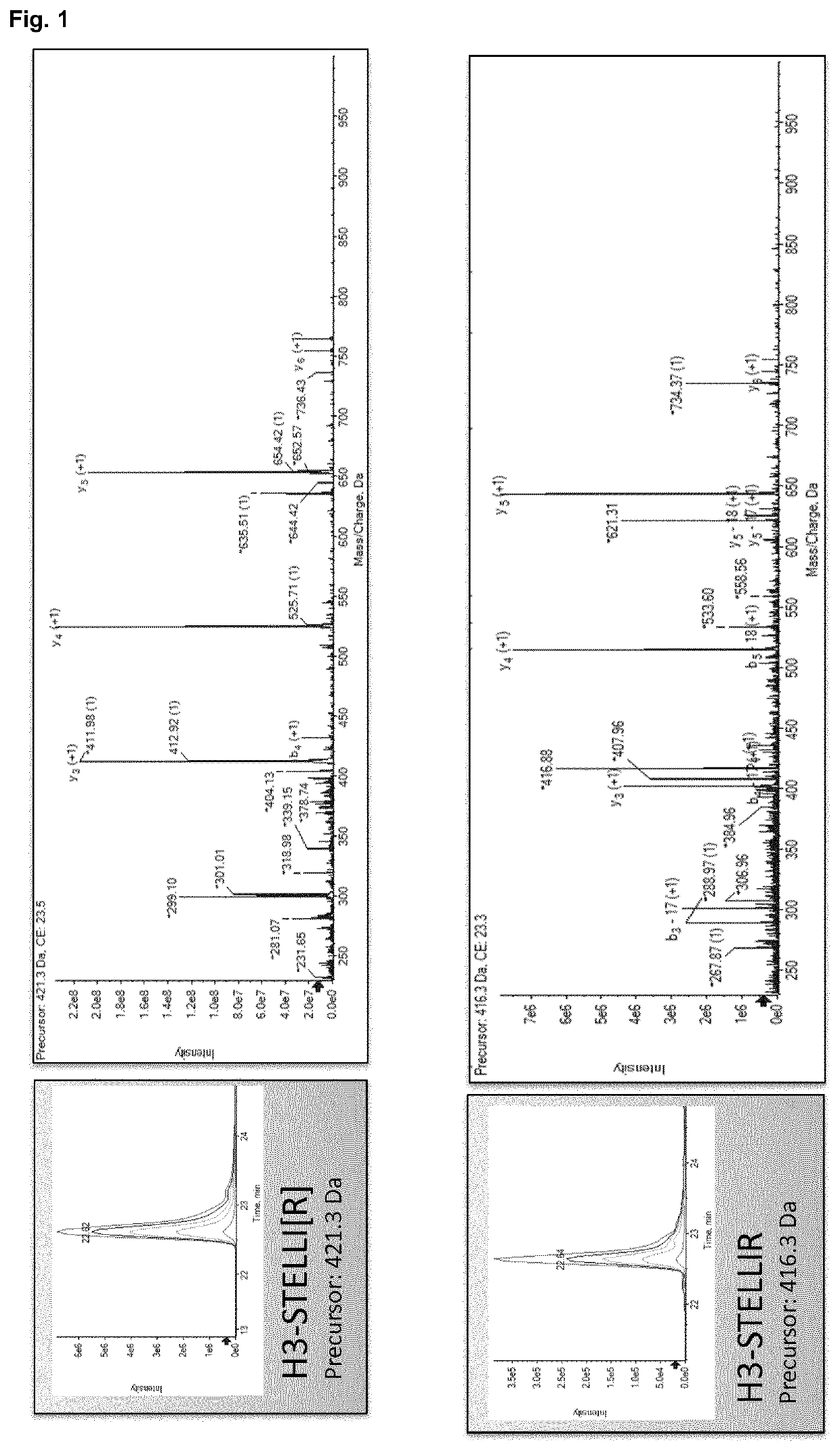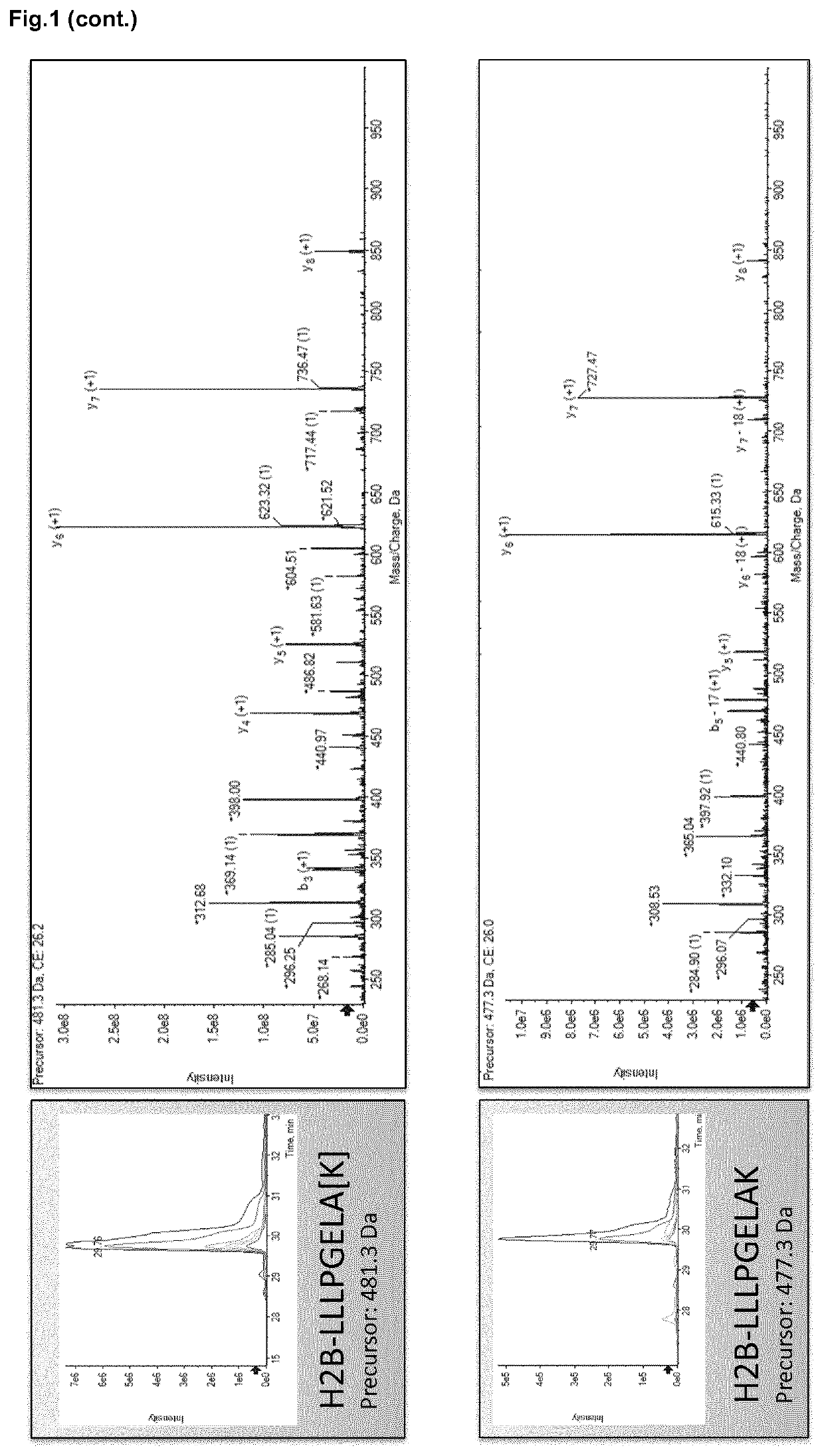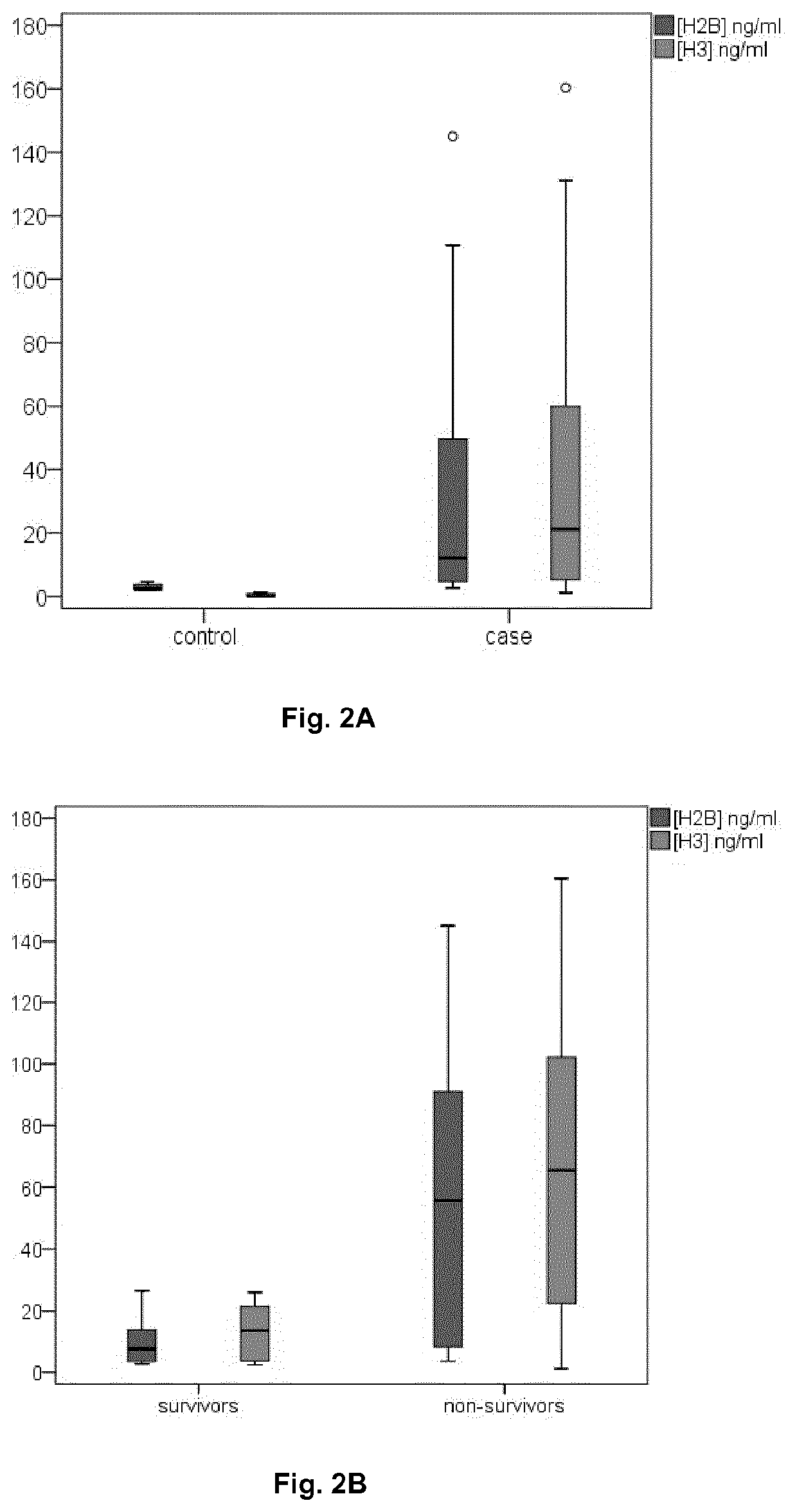Mass spectrometry-based methods for the detection of circulating histones h3 and h2b in plasma from sepsis or septic shock (SS) patients
a mass spectrometry and plasma technology, applied in the field of medical devices, can solve the problems of increasing incidence, most frequent cause of mortality in most intensive care units, and affecting millions of people around, and achieves the effects of improving the sensitivity and specificity of the detection of biomarkers, high sensitivity, and efficient and sensitive approach
- Summary
- Abstract
- Description
- Claims
- Application Information
AI Technical Summary
Benefits of technology
Problems solved by technology
Method used
Image
Examples
example 1
[0084]General Description of the Cohorts
[0085]A total of seventeen patients with clinical diagnosis of SS at admission in a medical ICU were analyzed. The median age was 67 years (37-85) and male patients accounted for 67% of cases. A median APACHE II score was 25 (14-44) and SOFA score median value was 10 (3-19).
TABLE 1shows the clinical characteristics of patients.Clinical features of patients with bacteriemic-septic shockSURVIVORSNON-SURVIVORSp (n = 9)(n = 8)valueAge (years) (Mean ± SD) 66 ± 12 63 ± 140.72Male gender (%)7 (78)5 (62)0.43APACHE II score (Mean ± SD) 21 ± 4 29 ± 100.05Charlson Index > 3 (%)4 (44)4 (50)0.6SOFA score 1st day (Mean ± SD) 9 ± 2 11 ± 50.5Antibiotic two weeks previous to2 (22)1 (12.5)0.54admission (%)Hospital admission in the previous2 (22)3 (37)0.53three weeksInfection source (%)Abdominal / urologic8 (88.8)4 (50)Respiratory02 (25)SSTI / bone infection02 (25)Unknown1 (11)00.09Microorganisms (%)MDRa02 (25)Non-MDRb9 (100)5 (62.5)Candida spp.01 ...
example 2
ial Diagnosis
[0103]A total of 40 samples were analyzed, with the following distribution between the groups included in the study: 11 controls selected at the ICU with no infectious pathologies (controls nonseptic ICU patients), 11 controls selected from healthy general population, 8 cases of sepsis and 10 cases of septic shock.
[0104]For histone H2B, the mean levels found in the 40 plasmas were the following (table 2):
Group[H2B] ng / mL (CI 95%)Control ICU population132.63 (92.68-172.59) Control general108.87 (84.23-133.50) populationSepsis219.63 (162.05-277.21)Septic shock1305.32 (587.42-2023.23)
[0105]The results are shown in FIG. 5, wherein levels of circulating histone H2B in plasma from control (ICU and general population), sepsis and septic shock patients are shown. Box and whisker plots represent the H2B levels in the four groups. Boxes denote interquartile ranges, horizontal lines denote medians, and whiskers denote the 10th and 90th percentiles. Levels are expressed as ng / mL of...
PUM
 Login to View More
Login to View More Abstract
Description
Claims
Application Information
 Login to View More
Login to View More - R&D
- Intellectual Property
- Life Sciences
- Materials
- Tech Scout
- Unparalleled Data Quality
- Higher Quality Content
- 60% Fewer Hallucinations
Browse by: Latest US Patents, China's latest patents, Technical Efficacy Thesaurus, Application Domain, Technology Topic, Popular Technical Reports.
© 2025 PatSnap. All rights reserved.Legal|Privacy policy|Modern Slavery Act Transparency Statement|Sitemap|About US| Contact US: help@patsnap.com



